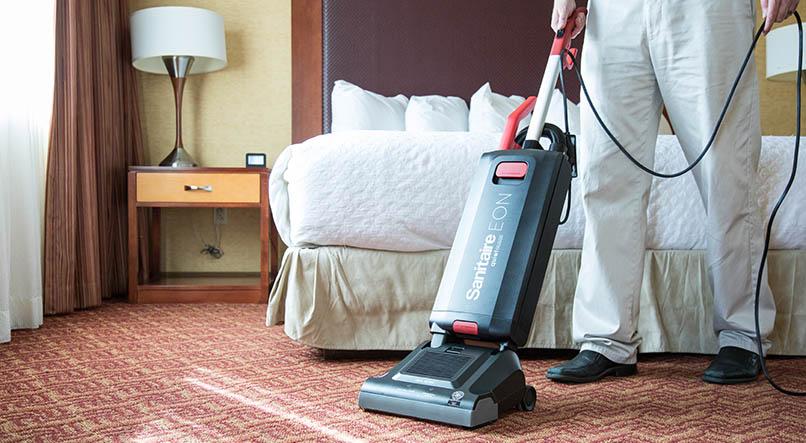
Consider Equipment as a Profit Center

Equipment that help crews clean larger areas faster and reduces interruptions (caused by breakdowns or part replacement) can improve productivity and profit, which, in turn, reduces the cost of owning the equipment. With an array of commercial vacuums now available on the market, selecting the proper equipment for the job plays an increasingly important role in determining whether a cleaning business can become successful. As you prepare to invest in a new vacuum, it’s important to consider the following:
Easy assembly and maintenance: Look for equipment that can be assembled or maintained with no tools. Look for equipment such as upright vacuums that have easily accessible ports for removing clogs, or easy access doors to remove and replace bags, brush rolls and filters. The faster these tasks can be accomplished, the faster workers can complete their assignments.
CRI Certification: Vacuums approved by the Carpet and Rug Institute are held to high industry standards and have been subjected to testing that proves they are effective at removing dirt, improving the appearance of carpet and protecting the texture of carpet. Certification also requires the vacuums exhaust minimal levels of dust and allergens.
LEED Approved Green Cleaning Equipment: A rapid rising number of Class A office buildings, schools and health care facilities are working to acquire and maintain LEED certification. Using LEED-approved cleaning equipment can help buildings fulfill certification requirements. LEED-approved equipment requires vacuums and extractors have the Carpet and Rug Institute Seal of Approval. Floor scrubbers require on-board chemical meters or use tap water to clean. In addition, all equipment must meet guidelines for ergonomic design, bumpers (to protect building surfaces) and noise (operate at 70 decibels or less).
Day Cleaning: Contractors whose equipment meet LEED requirements may also be able to shift building cleaning from night to day and enhance the LEED ratings of buildings. The U.S. Environmental Protection Agency encourages day cleaning because it reduces the amount of energy required to light, heat or cool buildings at night. Consultants estimate energy savings ranging from 0.6 to 8 percent by switching janitorial work from night to day.
Weight Distribution: Equipment should be designed with a low-weight at the handle and more weight at the base. The lighter the handle weight, the less strain on workers' arms, lower backs and shoulders. That lower weight also makes it easier and faster for workers to operate equipment in tight spaces.
Keeping all of these top of mind as you narrow your selection, can truly help your business stay affluent. For more tips on purchasing a commercial vacuum, visit Sanitaire.com.

Leave a comment